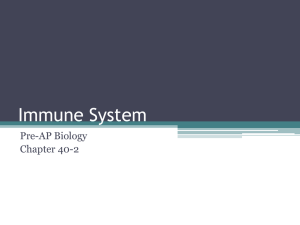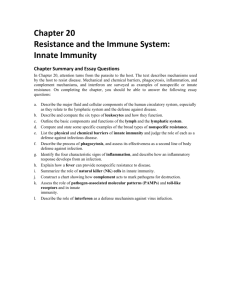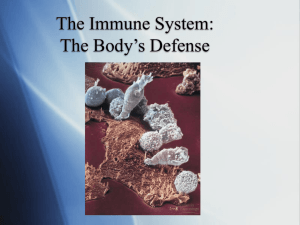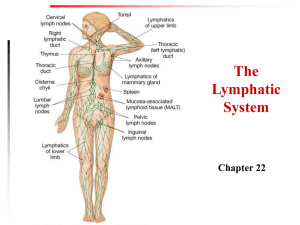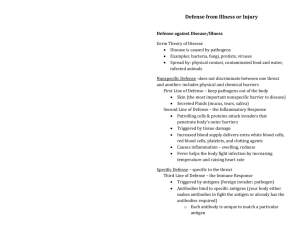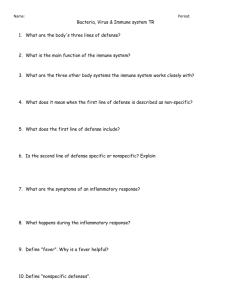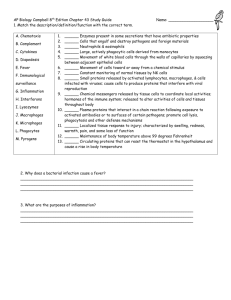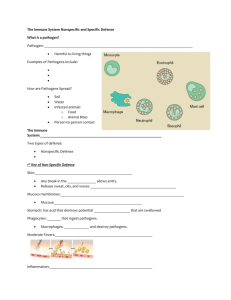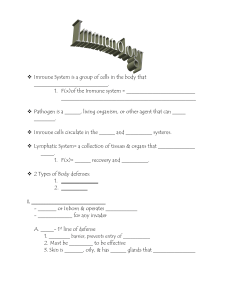Immune System - WordPress.com
advertisement
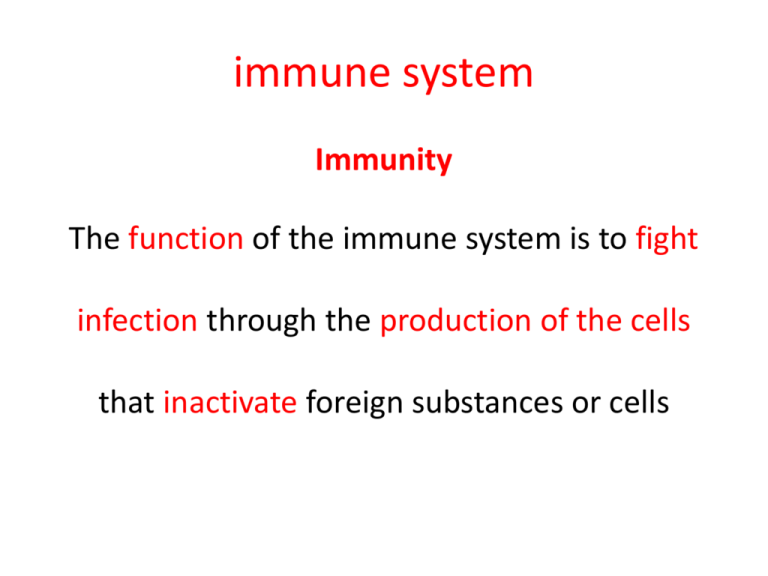
immune system Immunity The function of the immune system is to fight infection through the production of the cells that inactivate foreign substances or cells The immune system is a system of biological structures and processes within an organism that protects against disease. To function properly, an immune system must detect a wide variety of agents, known as pathogens, from viruses to parasitic worms, and distinguish them from the organism's own healthy tissue. Two general categories of defense mechanism against infection • Nonspecific defense • Specific defense Nonspecific defense/innate Do not discriminate between one threat and another. These defenses include physical and chemical barriers • First line of defense: • Keep pathogens out of the body • This role is carried out by skin, mucus, sweat and tears Nonspecific defense • Second line of defense Via inflammatory response Fever • interferon Specific defense • Immune response • Triggered by antigen (virus, bacteria etc.) • Two type of lymphocytes (B and T) – B-Cell for Humoral Immunity – T-Cells for cell mediated immunity Humoral Immunity • Pathogens antigen—B cell—plasma cell/memory B cells • Plasma cell —releases antibodies • Memory B cell —produced antibodies after second natural infection and second generation of MEMORY B cells cell mediated immunity • Body primary defense against its own cells when they become cancerous or infected by viruses • During cell mediate immunity T cell divide and differentiate into 1. Killer T cells (cytotoxic T cells) (Track down and destroy bacteria, fungi, protozoan, foreign tissues) 2. Helper T cells (produced memory T cell) 3. Suppressor T cells (as the pathogenic cells are brought under control, suppressor T cells release substances that shut down the killer T cells) 4. Memory T cells (like memory B cell, will cause a secondary response if the same antigen enters the body again)
